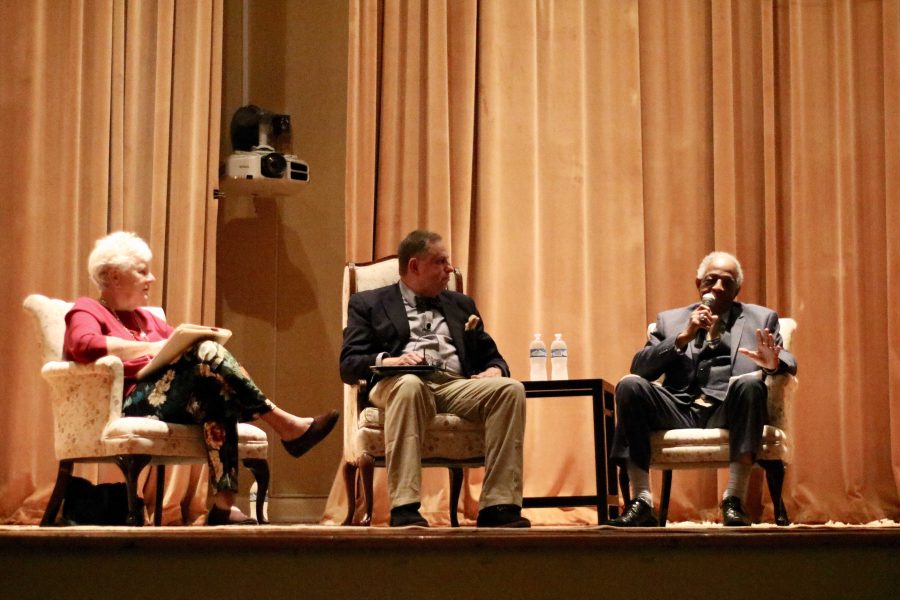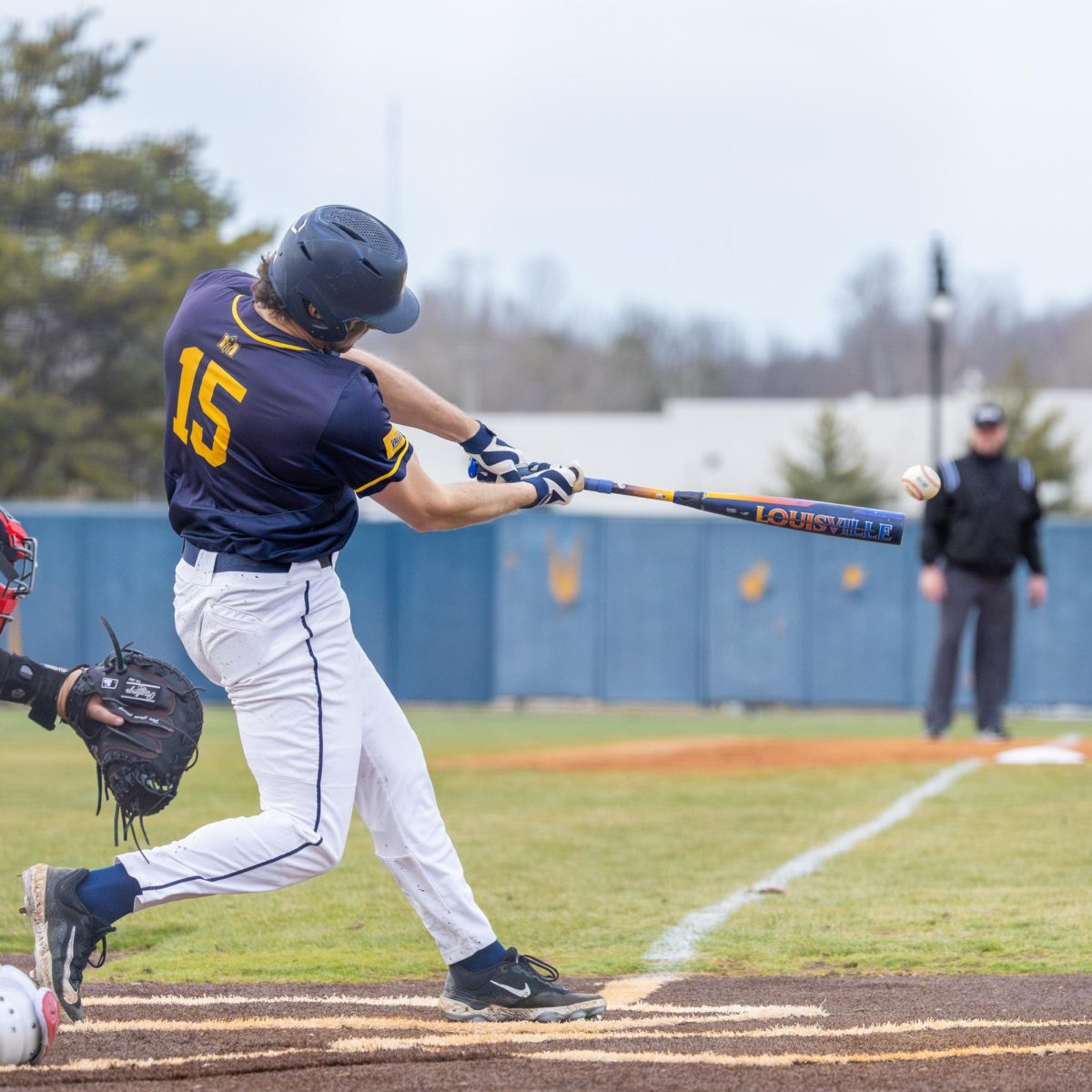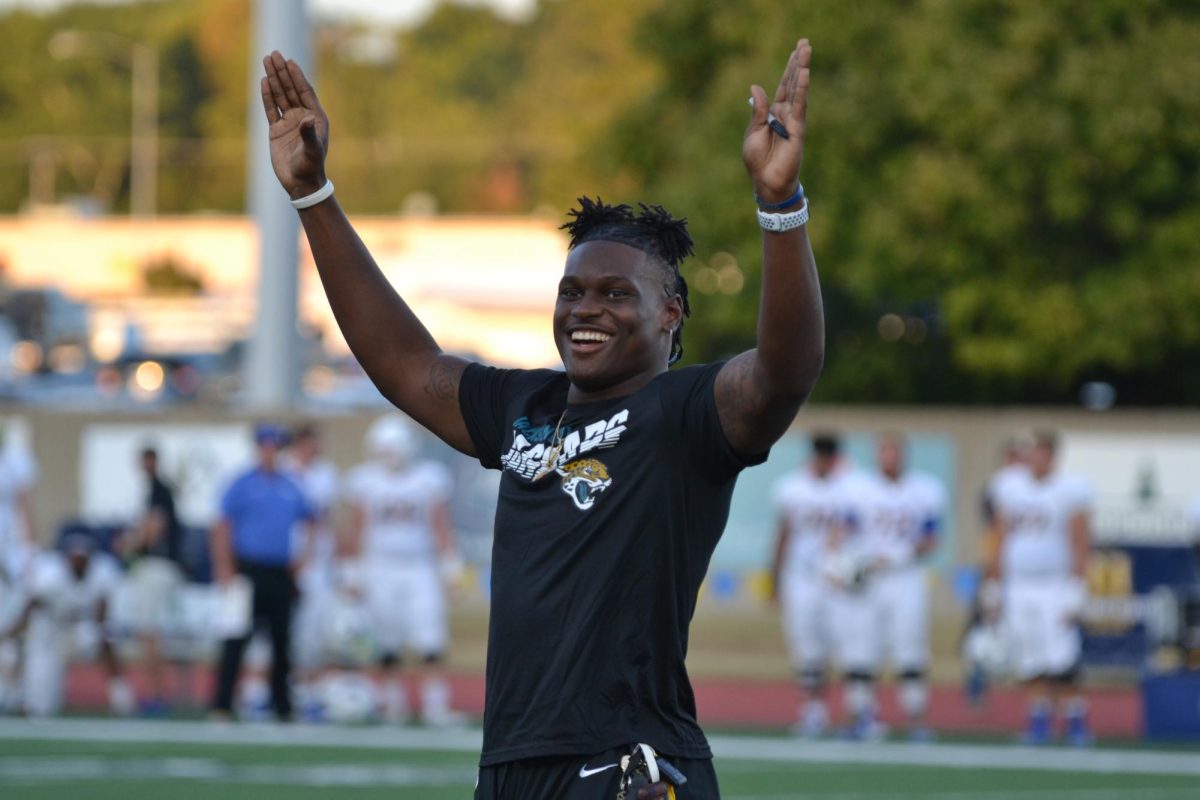Story by Adam Redfern
Staff writer
aredfern@murraystate.edu
Two Murray State sport giants in Margaret Simmons and Dennis Jackson held a Q&A forum and looked back on their careers at Murray State at the Wrather West Kentucky Museum on Thursday.
The event was held to celebrate the opening of the new sports display inside the museum titled ‘Hometown Teams’. Simmons and Jackson shared stories of their past experiences while attending and coaching at the school.
Simmons started the women’s track and cross country programs at Murray State, where she led the team to eight Ohio Valley Conference championships and was a two-time runner up in the OVC. Simmons was also the recipient of six OVC Coach of the Year awards.
Jackson ran track and played football at Murray State. Jackson was the first African-American Athlete in the OVC in 1960, he was ahead of most major conferences. Jackson set a precedent for all African-Americans to follow.
Simmons and Jackson came from different backgrounds, but both faced many obstacles on their way to becoming the transcendent figures they are today.
The event let the two shed light on their journeys as trailblazers, as well as their proudest moments as Racers.
Jackson shed light on was what it was like for him in the classroom, being the first African-American athlete at Murray State. Despite experiencing trials on the road, Jackson said he had a very normal experience at the university, describing himself as “just one of the crew.”
Traveling for Jackson was another story; he faced transgressions while on the road. Jackson recalled one experience in Murfreesboro, Tennessee, where he and the team were checking into a hotel when the clerk stopped Jackson and told him that he could not stay at the hotel.
“The clerk came to me and told me you can’t stay here,” Jackson said. “We drove off and we had a meeting, and Coach [Bill] Ferguson said ‘We’ll solve this.’ We’ll drive up, everybody will get out and Jackson you lay down in the back seat.’ I laid down in the back seat till about twelve o’clock, where someone came and knocked on my window and snuck me in the hotel.”
Another time Jackson and the team went to eat after a track meet, the restaurant would not let him eat with the rest of his team in the front. Jackson was taken to the back where he said he sat with the washing machines and the restrooms.
“They would not let me in the regular restaurant,” Jackson said. “They got me a place in the back where the dishwashers were, but it just happened to be a black lady that worked in the back. You wouldn’t believe the meal she served me!”
Simmons faced obstacles of her own in her small hometown in Florence, Ohio. Though she wanted to participate in sport, oftentimes her father wouldn’t allow her to.
“[Boys] played at a grange hall with a baseball field in the back. My dad told me I could play if I hit it to the grange hall,” Simmons said. “Which he thought I could never do. Until one time I did, and I asked if I could play. Where he said no, I was still a girl.”
Simmons might not have had the most fortunate time as a young female athlete, however she still overcame the obstacles she encountered and excelled in a major way.
Simmons shared one story where she was able to compete against some of the women who qualified in the Pan-Am games in Canada.
“I ran for a club team out of Cleveland, because Florence, Ohio was close to Cleveland,” Simmons said. “This one time the Pan-Am games were going to be in Canada. They had the American trials in Cleveland. Then we had a Wednesday night developmental meet came, and so us rugrats go up there. My team began to tell me to get in and run with the qualifiers, and stupid me I thought I was pretty good, so I did. Well one of those people who qualified for the Pan-Am games was Wilma Rudolph. They shot the gun and I was good for about ten meters, and then all of a sudden they were gone.”
Both athletes had their own struggles they had to face, and both shattered expectations and societal norms in order to help put themselves and Murray State University on the map.





























































































